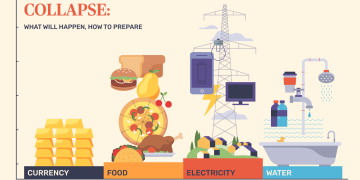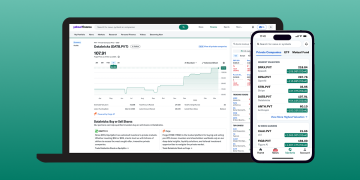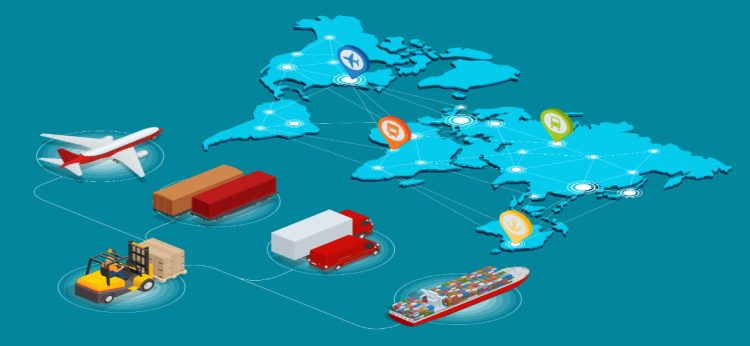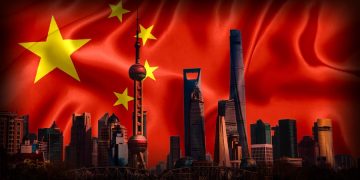Introduction
The COVID-19 pandemic upended global supply chains in unprecedented ways, revealing vulnerabilities that many businesses had overlooked in their pursuit of efficiency and cost reduction. As the world begins to emerge from the pandemic, businesses are reassessing their supply chain strategies, exploring the balance between globalized and localized networks, addressing new logistical challenges, and embracing cutting-edge technologies to ensure resilience in future disruptions. This article explores the evolving landscape of global supply chains in a post-pandemic world, with a focus on the shift toward supply chain globalization versus localization, the logistics challenges companies face, and the role of emerging technologies like blockchain in reshaping the industry.
1. Supply Chain Globalization vs. Localization: A Balancing Act
Before the pandemic, global supply chains were optimized for cost efficiency and scale, with companies sourcing raw materials and finished products from multiple regions worldwide to take advantage of lower production costs and economies of scale. This trend was bolstered by trade agreements, advances in transportation, and the increasing interdependence of the global economy. However, the disruptions caused by the pandemic exposed the fragility of this globalized model. Supply chain bottlenecks, particularly in manufacturing hubs like China, and delays in international shipping highlighted the risks of relying too heavily on distant suppliers and just-in-time inventory systems.
In response, many businesses are rethinking their reliance on globalization and considering the benefits of supply chain localization. Localization refers to sourcing materials and components closer to home, which can reduce reliance on international suppliers and mitigate risks associated with geopolitical tensions, tariffs, and transportation delays. For instance, U.S. and European companies are looking to establish supply chain hubs in Mexico, Central America, and Eastern Europe to reduce dependence on China and Asia.
The debate between globalization and localization is far from simple. On one hand, localizing supply chains offers advantages such as shorter lead times, lower transportation costs, and reduced exposure to international disruptions. On the other hand, globalization remains attractive for companies seeking access to larger markets, lower labor costs, and a diverse array of suppliers. The challenge for businesses is finding the right balance between global and local supply chains, weighing the risks and rewards of each model, and adopting hybrid approaches that allow for flexibility in times of crisis.

2. Post-Pandemic Logistics Challenges
In the wake of the pandemic, logistical challenges have become a major focal point for companies and policymakers. The disruptions in global transportation networks, port congestion, and the limited availability of shipping containers created massive delays in the movement of goods. These challenges continue to affect industries worldwide, from consumer goods to electronics and pharmaceuticals.
One of the most significant challenges businesses face is the ongoing shortage of labor in critical sectors such as warehousing, transportation, and shipping. The pandemic led to a labor shortage as workers fell ill, were furloughed, or left the workforce for other reasons, and many logistics companies have struggled to fill vacancies. As a result, the cost of shipping has surged, and delays have become common. Businesses must adapt by optimizing their logistics networks, investing in automation, and finding ways to attract and retain workers in a competitive labor market.
Additionally, rising fuel prices and environmental concerns are leading companies to reassess the sustainability of their supply chains. There is an increasing emphasis on reducing carbon footprints and shifting to greener modes of transport, such as electric vehicles and renewable energy-powered shipping options. Companies are also adopting more sustainable packaging practices and exploring alternative materials to reduce waste and improve efficiency in the logistics process.
Finally, trade restrictions, tariffs, and political tensions continue to complicate global logistics operations. The trade war between the U.S. and China, Brexit-related disruptions, and other regional conflicts have made it harder for businesses to navigate international trade. Companies need to stay informed about regulatory changes and have contingency plans in place to adjust their supply chain strategies quickly.
3. The Role of New Technologies in Supply Chain Optimization
The pandemic has accelerated the adoption of digital technologies across all industries, and supply chain management is no exception. Emerging technologies such as artificial intelligence (AI), machine learning, the Internet of Things (IoT), and blockchain are increasingly being used to improve transparency, efficiency, and resilience in supply chains.
One of the most promising technologies in supply chain management is blockchain. Originally developed for cryptocurrency, blockchain is a decentralized and secure digital ledger system that enables the tracking of transactions and assets across a distributed network. In supply chains, blockchain can be used to provide end-to-end visibility, ensuring that every transaction or movement of goods is securely recorded and can be traced back to its source. This level of transparency is crucial for ensuring the authenticity of products, preventing fraud, and improving trust between supply chain partners.
Blockchain also helps streamline processes by eliminating the need for intermediaries and reducing paperwork. In sectors like pharmaceuticals, where supply chain integrity is paramount, blockchain can provide real-time data on the status and location of products, ensuring compliance with regulations and reducing the risk of counterfeit goods entering the market.
Artificial Intelligence (AI) and machine learning are also playing a major role in transforming supply chains by enabling predictive analytics, demand forecasting, and process automation. AI can analyze vast amounts of data from various sources, such as inventory levels, weather patterns, and historical trends, to predict potential disruptions and suggest optimal supply chain adjustments. For instance, AI-driven demand forecasting can help businesses avoid overstocking or understocking products, reducing waste and ensuring the timely delivery of goods.
The Internet of Things (IoT) is another key technology driving innovation in supply chains. IoT devices, such as smart sensors and RFID tags, can track the real-time location and condition of products as they move through the supply chain. This technology provides companies with valuable insights into their operations, allowing them to optimize inventory management, monitor product quality, and detect potential issues before they escalate into larger problems.
Finally, automation and robotics are revolutionizing logistics by increasing efficiency and reducing reliance on manual labor. Automated warehouses, self-driving vehicles, and drones are transforming how goods are stored, moved, and delivered. These innovations not only improve speed and accuracy but also reduce operational costs and increase safety in environments where human workers may be at risk.
4. Moving Toward a Resilient and Sustainable Supply Chain
In the post-pandemic world, businesses are not only focused on rebuilding their supply chains but also on making them more resilient to future disruptions. The lessons learned from the pandemic are prompting companies to rethink their supply chain strategies, emphasizing agility, flexibility, and risk management.
One key trend is the growing importance of resilience planning. Companies are investing in technologies that can provide greater visibility into their supply chains and allow them to react quickly to changes in demand, supply, or disruptions. Companies are also diversifying their supply chains, relying on multiple suppliers and manufacturing hubs in different regions to reduce the risk of dependence on a single source.
Sustainability is another priority for the future of supply chains. As consumers become more environmentally conscious, businesses are under pressure to reduce their carbon footprint and adopt sustainable practices throughout their supply chains. This includes sourcing materials responsibly, reducing waste, optimizing energy use, and adopting greener transportation methods. Companies that fail to address sustainability concerns risk alienating customers and falling behind competitors who prioritize eco-friendly practices.
Conclusion
The post-pandemic world has forced businesses to rethink their supply chain strategies and embrace new technologies, while balancing the need for globalization with the benefits of localization. The future of global supply chains lies in creating resilient, agile, and sustainable systems that can withstand disruptions and adapt to changing market conditions. Technologies like blockchain, AI, IoT, and automation are enabling companies to improve visibility, efficiency, and security, while also reducing costs and improving sustainability. As businesses continue to adapt to the post-pandemic landscape, supply chains will become more flexible, intelligent, and capable of navigating future challenges.






























